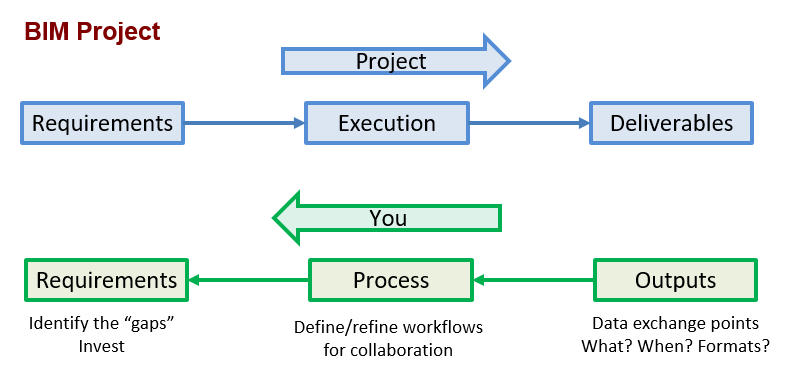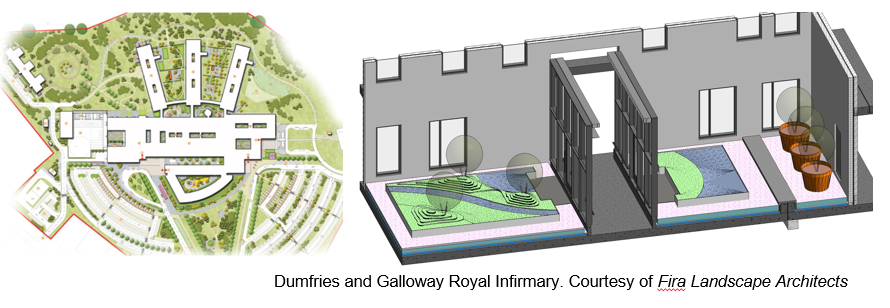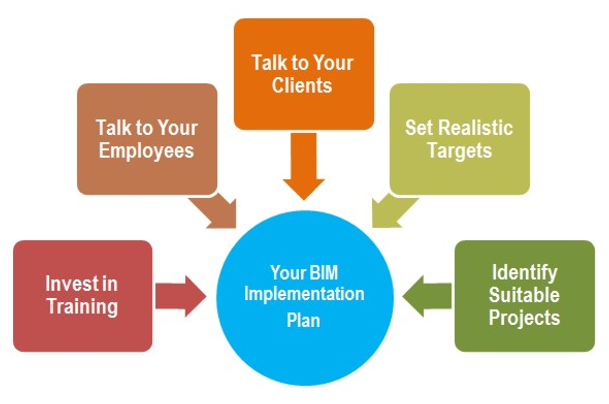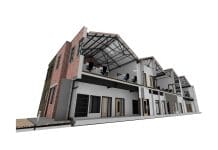There is much rhetoric surrounding BIM and this only seeks to add curiosity and confusion in equal measures. This prompts many people to ask: “How do I engage in a BIM project?” Mike Shilton, chair of the Landscape Institute Digital Practice Group, addresses this rather loaded question
When we engage in a project, we typically ask many questions to gain an understanding of what is required of us. As a landscape architect, if a client asks, “Can you landscape my project?” I don’t simply say, “yes”, design “some landscape” and go back with my thoughts! I would immediately ask questions. Is it a domestic, public or private project? Is it an urban or rural setting? Is it mainly a soft or hard landscape scheme? What are your requirements for the site?…et cetera, et cetera, et cetera.
However, when we are asked by a client if we can deliver BIM, we typically ask no questions, go away in panic, start attempting to define BIM in isolation and, inevitably, make poor decisions and costly mistakes.
Hence, many companies that have tried to engage with BIM often report that it has taken them a long time, cost a lot of money and they have yet to realise any significant benefits of adopting BIM. As with any other project you deliver, “the BIM” requirement will vary, so ask the client and project team to define what BIM means on this project by asking more questions.

Understand what you need to deliver
BIM is a process that defines a framework for project delivery and seeks to provide what the client requires, within budget and on time. Without knowing what you have to deliver on a BIM project, how can you begin to define what is required of you? The starting point is to understand your role and responsibility on the project. This will establish your level of involvement and what you need to consider.
The BIM Execution Plan (BEP) will define the standards, protocols, processes and data exchange points that will be required within the project. This should highlight the key questions that need to be resolved to deliver a successful project and the information required for the ongoing maintenance of the asset.
Once you know what you have to deliver, when this is required and the file formats, you can begin to evaluate how you will achieve this. In some cases, you may be able to provide this using your current processes or by introducing minor changes to your current workflows; otherwise, you need to consider how you are going to fill the gap. This may require changes to your current processes, upskilling staff, recruiting or employing the services of a specialist consultant. It may also require you to purchase new software, hardware and training. This process is not unfamiliar to most practices who work on a range of projects at the moment. As such, why should a BIM project be any different?
BIM is not always 3D
One of the key benefits BIM offers is data exchange for collaboration, which includes the ability to represent a feature graphically and though attribute information that describes the object. This adds value to a project as all team members can quickly interpret the design proposals without the need for a highly detailed 3D model that will quickly become unworkable, especially for landscapes with their myriad of complexities. A good edict I offer is, if 3D helps answer a key question, it is BIM. If not, it is visualisation! You should seriously question the value of producing highly detailed 3D representations of the features you need to create as it will significantly impact on the performance and use of the model with little or no tangible benefit. An understanding of the key questions that need to be answered will help you define the level of graphical detail and attribute information you need to provide for each object and assist with the decision-making process. (See Fig 2)

The software question
One of the most common questions I am asked relates to the software that should be used to deliver BIM, especially for landscape projects. Just as purchasing landscape design software will not make you a landscape architect, or using Microsoft Word will make you an author, no single software will deliver BIM.
As discussed earlier, to engage in a BIM project, you need to know the outputs required first. Only then can you review what software is most appropriate to generate this. Inevitably, no single software will be able to output all the information required for the project and you will need to consider a range of solutions to deliver this. This is no different to any other project you deliver now and most applications can be considered to be BIM authoring software because they contribute to the project.
If you are required to use specific software and you have identified that you can deliver the outputs required using your current software, people and processes, you should question why you need to purchase it, especially if it is expensive and inappropriate for your need. If there is no alternative than to purchase particular software for project collaboration or contractual reasons, this becomes a business decision, not a BIM issue, and you should decide whether the project or client is important enough to your company to warrant the change and investment required.

Next steps
At its heart, BIM provides a framework to share information and collaborate with others. Your company business plan and ethics should define the clients and projects you engage with now and wish to work with in the future. Your BIM Implementation Plan needs to align with these aspirations. Consequently, you need to engage with your design partners and clients – and research perspective clients – to understand how they are defining and implementing BIM.
Also, speak to your employees as they may have insights or talents that could influence where your company is heading. When you have established what you wish to achieve, you can start to define what BIM means to you and your company.
It is foolhardy to believe you can implement BIM overnight. Your company has evolved to where it is today following many years of change, improvements and refinement. You need to tackle BIM in the same way. Start with an action plan that defines small steps and sets realistic goals. Identify appropriate projects that will allow you to test elements of your plan and use these to feedback and improve your current processes. Ensure that each project moves you along your BIM timeline and gets you closer to where you wish to be.
In summary, there is no silver bullet to achieve and engage in a BIM project and it will vary between projects and clients. It will require an understanding of where you are now and where you wish to be in the future with a plan to get there. Each new journey starts with a first step so the sooner you start, the sooner you will get there!
Mike Shilton is product director at Keysoft Solutions and chair of the Landscape Institute Digital Practice Group.
Mike Shilton
Chair
Landscape Institute Digital Practice Group
Tel: +44 (0)207 685 2640
Twitter: @talklandscape













